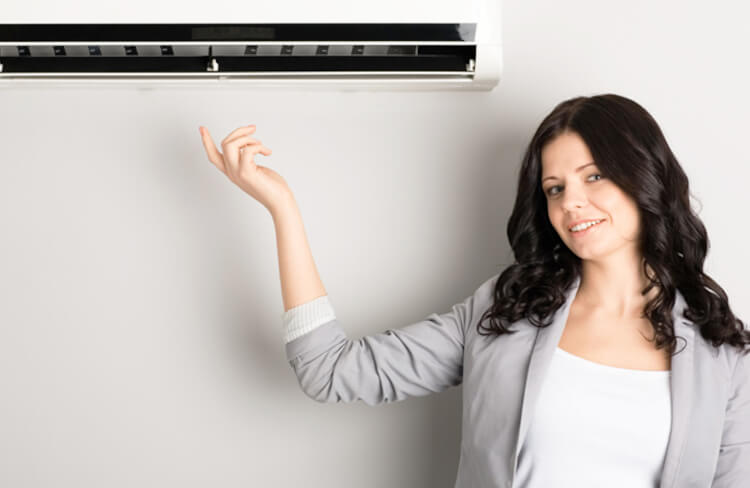Reduce Your Carbon Footprint and See The Advantages of Switching to a Green HVAC System

For residential use, green cooling and heating systems constitute one of the most prevalent forms of renewable energy.
When a heating or cooling system is labeled “green,” it typically means it consumes less energy than a conventional HVAC system. Green HVAC systems typically reduce electricity use by 30–50%. Green practices are those that have a beneficial effect on the planet by reducing energy consumption and fossil fuel consumption. There are several advantages, including substantial savings for the house owner, to adopting energy-efficient technologies.
Popular Green HVAC Systems and Devices
Dual Fuel Heat Pumps
An electrically heated pump and a gas heating system work together in a heat pump called a dual-fuel system, which is more efficient than either component used alone. These models are a highly sustainable option because they have a built-in temperature sensor that automatically switches to gas heat when the thermometer drops below 35 degrees.
Geothermal Technology
While geothermal technology has been around since the 1940s, it has only recently begun to gain traction among mainstream consumers and building owners. Geothermal heat pumps use a loop of underground pipes to collect and store heat extracted from the earth. When it gets cold outside, the pipelines discharge the heat stored inside them, warming the interior. During the warmer months, the process is turned around and heat is instead transmitted from the air to the ground below. When the temperature above ground rises, the liquid coolant in the mechanism sinks to the ground, where it stays cool. According to GreeDirect, “Traditional heating and cooling systems are more expensive to operate, quieter than most HVAC systems, and less environmentally friendly than geothermal heating and cooling systems.”
Appliances That Use Ice as a Power Source for Their Air Conditioning Systems
This exists, you read that right. Instead of using Freon, ice-powered AC freezes about 1700 litres of water overnight in a process called “ice changing.” Afterward, it enters a cooling mode in the early hours to condition the air in a building for six-hour periods. When all of the ice has melted, the system turns off by itself and the regular air conditioner resumes its normal function. This environmentally friendly technology has already been adopted by several commercial establishments, which have found it to be an effective means of decreasing energy use and costs.
Hydronic HVAC Systems
These systems that use water circulating through pipes to warm or cool a building have been around for quite some time. A radiator in an older apartment building would technically qualify as hydronic heating equipment. Hydronic heating, on the other hand, has advanced significantly over time. Your home’s ideal temperature can be achieved with a hydronic system by transferring heat through the floor, walls, and ceiling using conduction, convection, or radiation.
Not to worry, a wind turbine isn’t necessary to take advantage of wind heating with a wind power system. Unlike conventional water heaters that rely on electricity or fuel, wind power systems use tiny wind turbines that produce hot water and can be fitted on your roof or in other windy areas of your property.
The Recycled Denim Used in the Making of Quiet Duct Wrap
This commodity safeguards your household from humidity, air currents, and radiant heating by decreasing air loss and increasing heat build-up in your ductwork. Green HVAC systems can have a beneficial effect on both your wallet and the planet. Furthermore, you have more choices than you may think. But why make the change now? Here are nine compelling arguments in favour of installing environmentally friendly heating, ventilation, and air conditioning systems immediately.
Why Switch To Green Systems Now

Considerable Tax Incentives for Upgrading Obsolete Equipment
The law’s continued validity is uncertain. However, federal law states that this is the year in which you can claim a tax credit for the cost of a new HVAC system. Savings of R 90 000 or more are common, on average, though this does vary by system size. And that can go a long way towards offsetting the expense of upgrading to green HVAC technology from an older, less efficient system.
Improvements to Conventional Heating, Ventilation, and Air Conditioning Systems That Are More Environmentally Friendly
Green HVAC technology provides several viable paths forward for increasing the efficiency of your existing HVAC setup. If you have a programmable thermostat, you can access the app that controls it from your mobile, iPad, or computer, giving you complete control of your home’s climate control system at your fingertips. In the case of a sudden business closure or if you simply forget to adapt the thermostat before departing on holiday, a smart thermostat can be programmed from afar. It’s a simple and fast method for maintaining optimal HVAC performance all year round.
A zoned HVAC system allows you to separate a large space into smaller, independently climate-controlled areas. Zoning is compatible with variable refrigerant flow (VRF) HVAC systems, ducted mini-splits, and traditional ducted splits. Maintain the desired temperature in used areas while turning off or lowering the temperature in unoccupied ones to save money on utilities.
Essentially “free cooling” can be achieved by installing an HVAC economizer and allowing it to draw in cooler outdoor air into the interior space. This environmentally friendly HVAC technology can decrease the cost of cooling systems by as much as 75% by minimising the amount of time your Air conditioning system must be on. If your HVAC system doesn’t have a built-in economiser, an expert can install one with minimal adjustments to the building’s structure or machinery.
Individually Controlled Temperature in several Separate Areas
A VRF system, or Variable Refrigerant Flow, is the pinnacle of heating and cooling distribution. This environmentally friendly HVAC system consists of numerous independently operable mini-chillers. The VRF in the main system is what determines how much refrigerant is sent to each air handling unit in each zone.
With a VRF HVAC system, you can get environmentally friendly heating and cooling at the same time. A VRF unit’s variable-speed compressor allows it to deliver just the proper level of cooling to smaller zones based on the weather outside. That makes it more energy efficient because it runs less often and at a lower capacity.
Solar Power is Readily Available
Solar energy, in the form of either large-scale solar farms or smaller-scale rooftop systems, is likely the most recognisable green HVAC technology. The solar panels’ photovoltaic components allow them to convert sunlight into electricity, which can then be used to power appliances such as air conditioners, refrigerators, and lights.
Although the upfront investment for a solar energy system can be substantial, there are tax credits and other incentives available to help offset this. Also, cheaper alternatives exist where liquid or air is used to absorb solar energy and then transfer that heat to a structure or storage system.
A Cooling System Powered by Ice
Ice power air conditioning is the answer if you’re searching for a greener, more efficient way to cool your home. When the temperature increases during the day, the Ice power air conditioning system defrosts the water it froze the night before. Instead of using a compressor, the air conditioning unit chills the house with frozen water. It’s going to save you both energy and money because it does not employ a compressor.
What Could Be Done is Practically Limitless
Green HVAC innovation is revolutionising the market, experts agree, elevating environmental and sustainability concerns to the same level of importance as reduced operating costs and improved indoor air quality. New green HVAC innovation is sure to proliferate, alongside choices for further energy-efficient conventional HVAC systems, as more attention is paid to finding and developing environmentally responsible HVAC solutions.







